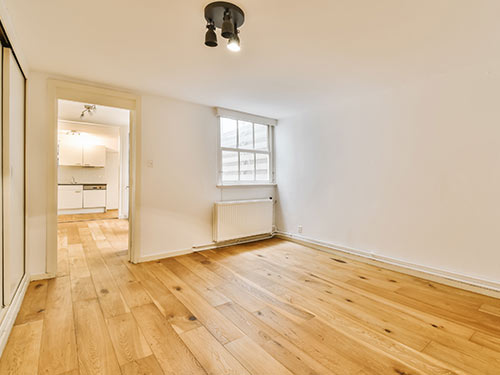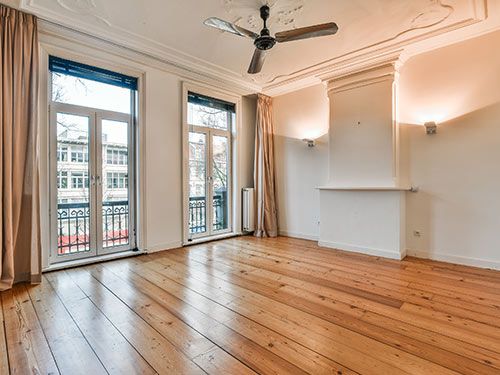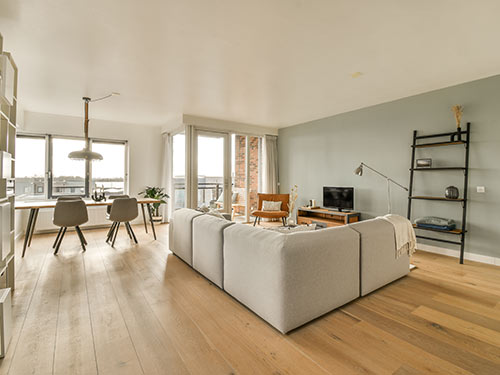Back to Flooring Products
Engineered vs Solid Hardwood: Which Wood Flooring Should You Choose?
 When selecting the ideal hardwood flooring for your home, one of the most common questions is: What’s the difference between engineered hardwood and solid hardwood? While both options offer timeless beauty, natural warmth, and lasting appeal, they differ significantly in terms of construction, performance, installation, and long-term maintenance. Understanding these key differences is crucial for making the right investment—one that aligns with your lifestyle, budget, interior design goals, and the specific conditions of your home. In this guide, we’ll break down everything you need to know to choose the best hardwood flooring solution for your space.
When selecting the ideal hardwood flooring for your home, one of the most common questions is: What’s the difference between engineered hardwood and solid hardwood? While both options offer timeless beauty, natural warmth, and lasting appeal, they differ significantly in terms of construction, performance, installation, and long-term maintenance. Understanding these key differences is crucial for making the right investment—one that aligns with your lifestyle, budget, interior design goals, and the specific conditions of your home. In this guide, we’ll break down everything you need to know to choose the best hardwood flooring solution for your space.
What Is Solid Hardwood Flooring?
Solid hardwood flooring is crafted from a single, continuous piece of timber, commonly from species like oak, maple, or walnut. Each plank is milled from a solid block of wood and typically ranges from 18mm to 20mm in thickness within the UK market.
Key Features of Solid Hardwood Flooring
- Material: 100% natural hardwood
- Installation: Usually nailed or glued to a wooden subfloor
- Refinishing: Can be sanded and refinished multiple times over its lifespan
- Durability: Extremely long-lasting, though susceptible to changes in humidity and moisture
Regarded as a premium flooring option, solid wood floors are appreciated for their classic appeal, longevity, and the value they add to a home. However, they do require a controlled indoor climate. Because of their sensitivity to environmental changes, solid hardwood is not recommended for areas with high moisture, such as basements or bathrooms.
What Is Engineered Hardwood Flooring?
Engineered hardwood flooring is made from multiple layers of wood, designed for enhanced stability and moisture resistance. The top layer—called the wear layer—is genuine hardwood, while the base layers typically consist of cross-laminated plywood or high-density fibreboard (HDF).
Key Features of Engineered Hardwood Flooring
- Material: Real hardwood surface with plywood or HDF core
- Installation: Highly versatile—can be glued, floated, or stapled
- Refinishing: Can typically be sanded 1–2 times, depending on the thickness of the wear layer
- Stability: Excellent resistance to humidity and temperature fluctuations
Thanks to its layered construction, engineered hardwood offers superior dimensional stability, making it ideal for a wide range of installations. It’s a particularly popular choice in the UK for spaces like kitchens, basements, and homes with underfloor heating systems, where traditional solid wood may not perform as well.
Visual Appearance: Can You Tell the Difference?
At first glance, solid hardwood and engineered hardwood floors look nearly identical. Both use a real wood top layer, offering the same natural grain patterns, rich colour variations, and authentic texture that define high-quality wooden flooring.
In recent years, engineered wood flooring has evolved significantly, with options available in a wide variety of finishes and formats, including wide planks, hand-scraped textures, and distressed styles that cater to both modern and rustic interiors. This makes engineered wood particularly popular for achieving contemporary design aesthetics without compromising on visual authenticity.
The only visible difference often lies in the side profile of the board. When viewed from the edge, engineered wood reveals its layered construction—a clear giveaway compared to the single-block makeup of solid hardwood. However, once installed, this difference is virtually impossible to detect with the naked eye.
Durability and Maintenance
 Solid hardwood flooring excels in long-term durability when properly maintained. Thanks to its thicker profile, it can be sanded and refinished multiple times, often for several decades. This makes it highly suitable for high-traffic areas such as hallways and living rooms. However, solid wood is more susceptible to warping, cupping, and gapping when exposed to moisture or humidity changes.
Solid hardwood flooring excels in long-term durability when properly maintained. Thanks to its thicker profile, it can be sanded and refinished multiple times, often for several decades. This makes it highly suitable for high-traffic areas such as hallways and living rooms. However, solid wood is more susceptible to warping, cupping, and gapping when exposed to moisture or humidity changes.
In contrast, engineered hardwood flooring offers better performance in environments with moderate moisture, such as kitchens or installations over underfloor heating. While its wear layer is thinner, limiting refinishing to 1–2 times, it compensates with greater dimensional stability.
Maintenance Tips for Both Types
- Regular sweeping to remove grit and debris
- Occasional damp mopping with a pH-neutral cleaner
- Use of felt pads under furniture to prevent surface scratches
- Rugs or mats in entryways to reduce dirt and moisture exposure
With consistent care, both engineered and solid hardwood floors can maintain their beauty and function for decades, making them a smart investment for UK homeowners.
Installation Options
When it comes to installation, the requirements and flexibility of solid vs engineered hardwood flooring vary significantly.
Solid Hardwood Installation
Solid hardwood flooring typically requires a wooden subfloor and is installed by nailing or gluing the boards in place. This method ensures a strong, permanent bond but limits its suitability in many UK homes, especially those with concrete subfloors or underfloor heating systems.
Engineered Hardwood Installation
Engineered wood flooring, on the other hand, offers much more flexibility. It can be:
- Floated over an appropriate underlay
- Glued down to both timber and concrete subfloors
- Stapled where suitable
This adaptability makes engineered wood a popular choice for modern British homes, particularly those with underfloor heating or non-timber substructures. The installation is often faster and less invasive compared to solid wood, making it ideal for both renovations and new builds.
Cost Comparison: Engineered vs Solid Hardwood
Engineered hardwood flooring is generally the more budget-friendly option compared to solid wood. While premium engineered ranges can rival the cost of some solid wood floors, their lower installation costs, greater compatibility, and reduced maintenance needs often make them the more economical choice in the long run.
Average Cost Breakdown (per m² in the UK)
- Solid Hardwood: Higher material cost + more expensive installation (due to subfloor preparation, nailing/gluing)
- Engineered Hardwood: More flexible pricing + faster and easier installation
For homeowners renovating on a budget or dealing with non-wooden subfloors or underfloor heating, engineered hardwood often offers better value. However, solid wood remains a worthwhile investment for those seeking long-term returns and maximum refinishing potential.
Which One Is Better for Your Home?
 There’s no universal answer to the engineered vs solid hardwood debate—it all depends on your home’s conditions, your budget, and your long-term plans. Here's a quick comparison to help guide your decision:
There’s no universal answer to the engineered vs solid hardwood debate—it all depends on your home’s conditions, your budget, and your long-term plans. Here's a quick comparison to help guide your decision:
Choose Solid Hardwood Flooring if:
- You’re looking for a long-term investment that adds resale value
- You want the ability to refinish your floor multiple times
- Your property has a stable indoor environment with minimal moisture or temperature fluctuations
Choose Engineered Hardwood Flooring if:
- You need a budget-friendly solution with wider installation flexibility
- Your home has underfloor heating or a concrete subfloor
- You want faster installation with reduced long-term maintenance
Still unsure? Our team at FlooringFirst! is happy to offer personalised advice or arrange a free site visit anywhere in London to help you choose the best flooring for your home.
Conclusion
In the engineered vs solid hardwood debate, there’s no universally “best” option—just the one that best suits your needs, lifestyle, and property structure. Both flooring types offer timeless beauty, long-term durability, and excellent value, but they cater to different scenarios.
For homeowners—especially those in modern flats, new builds, or properties with underfloor heating—engineered wood flooring is often the more practical and cost-effective solution. Meanwhile, solid hardwood flooring remains the gold standard for traditional homes with timber subfloors, offering unmatched character and refinishing potential.
Whichever route you take, installing hardwood flooring is a smart investment that enhances your home’s interior, boosts resale value, and brings the natural elegance of wood into your daily life. Need help deciding? Book a free consultation with FlooringFirst! and let our experts help you make the right choice for your home.